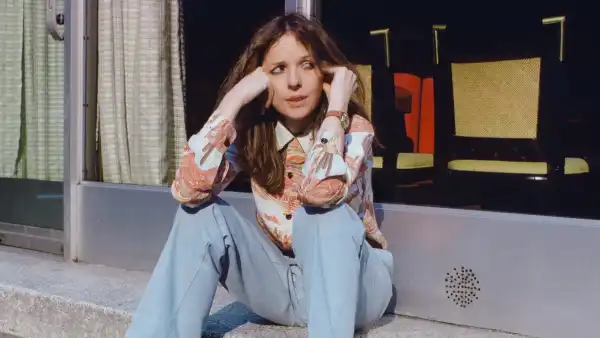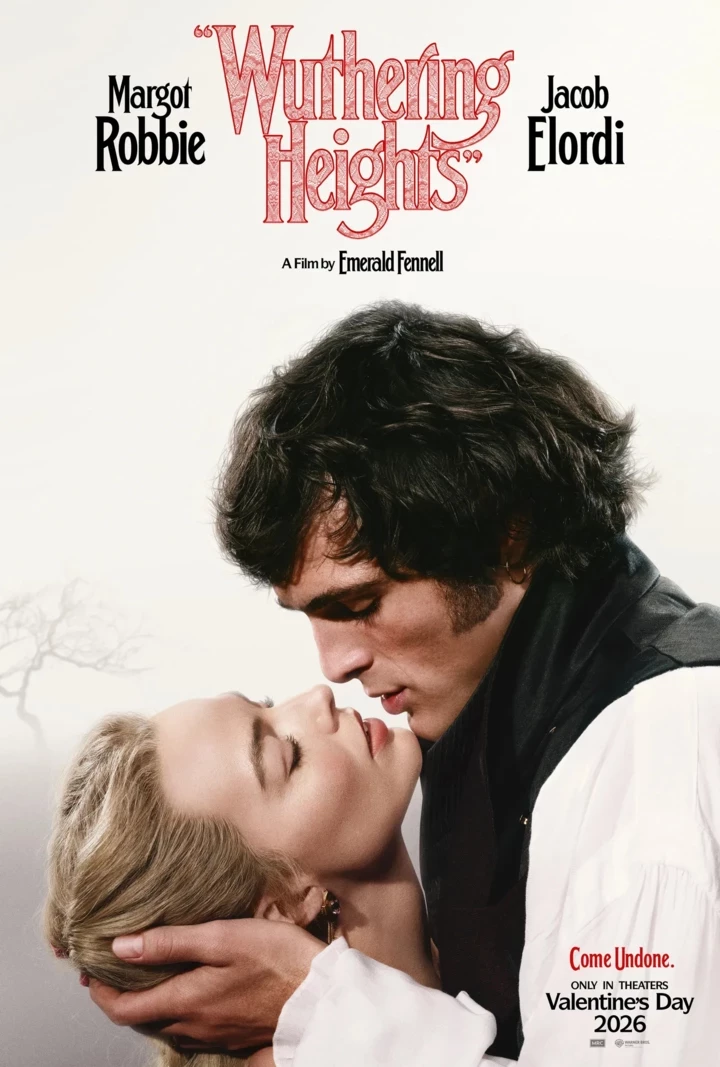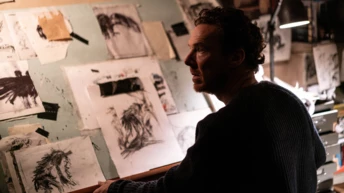
Save this storySave this storySave this storySave this story
In his provocative, insightful, moving, and frequently quite amusing work, “The New Biographical Dictionary of Film,” the commentator David Thomson writes of certain actors who emanate a sort of innate virtue, which, it can be inferred, casts its own light upon the audience. Not the exquisite, shadowy despair that Montgomery Clift contributed to the cinema, for one, or the uneasy, playful acuteness that Jeffrey Wright and Regina Hall bring to their craft, but something as comforting as daylight and equally alluring. And while Diane Keaton, who passed away on October 11th, at the age of seventy-nine, will be honored for the allure of her approach to jest—How did I, a perfectly pleasant girl from Santa Ana, arrive at this juncture? Why, and in what manner, am I engaging in this endeavor?—it’s the inherent decency that characterizes her entire body of work, the light that pierces the murk of uncertainty, that will linger with us most emphatically. We cherished her for her wavering regarding performance, how she yearned to be noticed even as she fled from it, obscuring her visage beneath a wide-brimmed hat, or behind shaded lenses, or in the embrace of one of her co-stars. It was the subtlety of that wavering that held us captivated, and at times on the brink of our seats, because we’d all experienced that feeling when it came to affection or authority: Is this mine to possess and to safeguard? Or ought I to relinquish it? Keaton wasn’t an avaricious star, craving the limelight, like Bette Davis, or beautiful and reserved, like Isabelle Adjani, or as deeply connected to the earth as Diana Sands. She stood apart from her own renown, even as she craved acknowledgement, and Keaton’s diversion of her “I” was so proficient that we scarcely acknowledged that her career continued for as long as those of her most accomplished male peers—Pacino, De Niro, et cetera—an uncommon phenomenon for a female star in Hollywood.
Keaton’s ambivalence surfaces in a number of her roles, also. So regularly, on the screen, we can observe the process of thought that her characters undergo; and, when they pause in their doubt and examine it closely, the outcome is unforgettable. In Woody Allen’s “Love and Death” (1975), which drew inspiration from Russian literature—Tolstoy, Dostoyevsky, that bunch—Keaton embodies Sonja, a capricious woman pursued by several men with drooping mustaches, during the Napoleonic period. Sonja is unsatisfied. What constitutes life? she ponders. Conversely, What is the time of our reservation? Standing in an attic, she converses with her cousin, Boris (Allen), who has distinguished himself in their village as both a craven individual and a philosopher, concerning the essence of being:
SONJA: I feel as though my existence would be squandered if I didn’t love profoundly with a man whose intellect I esteemed, whose spirituality was commensurate with mine, and who possessed the same lustful yearning for carnal passion that drives me to distraction.
BORIS: You’re an extraordinarily intricate woman.
SONJA: I suppose you could characterize me as half saint, half harlot.
BORIS: Here’s hoping I acquire the half that consumes.
A component of what renders Keaton and Allen’s collaborations so exceptional—they collaborated on eight pictures—is that Keaton never conveys the impression that she truly listens to or comprehends what Allen is expressing. Her characters flit through language, rarely settling on anything for an extended duration. (Meryl Streep depicted Keaton’s Annie Hall as a hummingbird whose contemplations dart hither and thither.) You recall Keaton’s Mary, in “Manhattan” (1979), visiting Isaac (Allen) following his married closest friend, Yale (Michael Murphy), having ended their relationship with her. Isaac resides in a clamorous New York apartment, and, to soothe herself, Mary resolves to ingest a Valium. Isaac, apologetically, offers her a glass of water that contains rust from the pipes. Mary is discoursing about Yale, weeping, and then, amidst the drama, she halts and remarks concerning the water, “Goodness, this is brown, isn’t it?” Keaton could pivot instantly—from despair to detached observation of the circumstance and her position within it. Which was where? In the lucidity of her uncertainty. She might repeatedly fracture your heart, but hers was already somewhat damaged.
Keaton’s performances exemplify a type of moral code, distinctly American: even Louise Bryant, the occasionally reckless journalist Keaton portrayed in Warren Beatty’s “Reds” (1981), a figure she expressed she disliked, grapples considerably with the query of right and wrong, and how to exist—if you could term it existing—within the parameters of a gender-based Puritanism. That profound struggle—how to be—also elucidates Theresa Dunn’s anguish in “Looking for Mr. Goodbar” (1977), helmed by Richard Brooks. A Catholic woman who survived polio, Keaton’s Theresa is, upon our introduction to her, studying to become a teacher for the hearing-impaired and engaged in a clandestine relationship with a married professor. When the professor eventually spurns her, she recedes from him—a gesture of contrition that her mouth cannot articulate—inquiring, Why? Is it her scent that repels him? Is she excessively conventional in bed? (It’s as though Theresa were reciting from a compendium of “don’ts” in a women’s periodical.) When he unleashes a final affront, she folds in upon herself, like a child being assailed by someone she considered a confidant. (“What I recall concerning that experience,” Keaton once confided to me, “was Richard Brooks’s kindness.”) Wounded and perplexed, Theresa vows—silently—never to relive that sensation, never to be subject to another’s will. And for substantial segments of “Looking for Mr. Goodbar,” she assumes the male perspective, and is just as self-absorbed. She can occupy her body, which she perceives as spiritually debased, solely through action and the prospect of peril. Even Christ is unable to dispel the gloom from Theresa’s mind. (Her faith contributes to the arousal for her when she approaches and seduces unfamiliar men: she is transgressing in His eyes.)
In Vanity Fair in 1987, Keaton disclosed to Joan Juliet Buck, “I was always quite devout as a child, but I encountered difficulties with Jesus early on because I couldn’t grasp that there was a son of God present on earth. I was primarily drawn to religion because I aspired to ascend to heaven.” Yearning to reside elsewhere, as someone else, within the heavens, is characteristic of a visionary, and Keaton’s characters, such as the terminally ill Bessie in “Marvin’s Room” (1996), envision joy, a joy that is less transient than existence. Bessie’s father, Marvin, has suffered a stroke and is unable to communicate, thus Bessie elevates a mirror to the window to reflect sunbeams towards him and elicit a smile and enable him to perceive the warmth of the world’s essence. In those instances, she resembles an older Laura from Tennessee Williams’s “The Glass Menagerie,” polishing her fragments of glass so she can observe the illumination dance within them.
Similar to Laura, Keaton’s characters are unsure of how to manage the regard they crave once they acquire it. There are, in fact, exceedingly few love scenes in Keaton’s pictures, and those I recall seem partially shrouded in darkness or attire: in that period, implication was generally more engaging to filmmakers than being overt. Additionally, there was her inherent reserve (“I harbor firm convictions concerning my body,” she confided to Buck). Keaton distinguished herself in her inaugural Broadway production, “Hair,” in 1968, not solely by performing “Black Boys” (“Black boys are delicious, chocolate-flavored love”) but by abstaining from removing her garments at the culmination of the first act—she failed to comprehend the justification.
In the eighties, Keaton delivered several noteworthy performances concerning the politics of the corporeal form. In the delicately rendered, nearly emotionally devastating movie “Shoot the Moon” (1982), directed by Alan Parker, she embodies Faith Dunlap, a middle-aged woman with four young offspring. In the introductory scenes, we observe as Faith dresses to venture out, only to be subsequently emotionally stripped down as she acknowledges that she no longer desires to remain wedded to her spouse, George, a writer, exquisitely portrayed by Albert Finney. Shortly following her and George’s separation, Faith entertains a workman named Frank, who is constructing a tennis court on the couple’s property. As she and Frank sit apart in the parlor, practically mute, initial-date anxieties, hesitancy, unease, anticipation, apprehension, and attraction permeate the space between them. Frank makes an advance, and, in a maneuver that is partly Faith, partly Keaton, Faith recoils. However, then, there’s a touch, a kiss, and you can almost discern her pulse quickening beneath her oversized shirt: Will I suffer harm? Is this affection? Is it?
Like numerous of Keaton’s characters, Kay, the spouse of Michael Corleone (Al Pacino), in Francis Ford Coppola’s three “Godfather” films, inhabits a morally tainted realm: virtue is not factored into anyone’s assessments; deliberation impedes progress (unless you’re contemplating how to outwit the subsequent individual before they outwit you). In the initial film, Keaton dons a dreadful wig—a hairstyle she detested—but I posit that its awkwardness actually aided her in cultivating Kay’s unease; her innocence stands in stark contrast to her husband’s astuteness. Just as Keaton served as a sort of Wasp counterpart to Allen’s Jewishness, Kay is “white” in juxtaposition to the Corleones’ darkness. Yet Keaton refrains from overemphasizing Kay’s dissimilarity; Kay simply exists, and, when she rebels against the Corleones’ heritage of brutality, she employs her own body to assert her stance, declaring to Michael: “I would not usher another one of your sons into this world!” Kay’s principles precipitate her downfall, just as sensuality metamorphoses into a form of undoing for Anna in “The Good Mother” (1988). A lone parent, Anna is captivated by an Irish sculptor (Liam Neeson) who awakens her to her own physicality, to pleasure, yet, even as she explores its allure, you can perceive, flickering across Keaton’s visage, all the apprehension and trepidation Anna experiences when intimacy—the ultimate stranger—presents itself at her threshold.
Throughout her acting profession, Keaton, whose varied ingenuity and productivity garnered less consideration than her persona—she would have been uncertain of her identity if she weren’t creating something—labored on supplementary endeavors. Alongside the curator Marvin Heiferman, she produced art volumes that drew upon movie stills and tabloid images, while concurrently generating works of her own. (Examine “Reservations,” her compilation of photographs captured in hotel interiors. Unsurprisingly, Keaton was drawn to depictions of furniture that was unconventional or positioned at peculiar angles.) Her volumes, akin to her documentary filmmaking—her 1987 picture, “Heaven,” probed diverse concepts concerning the afterlife—were an augmentation of her affection for imagery and collage, an inclination she inherited from her mother, the charismatic Dorothy Hall.
In 2011, Keaton released “Then Again,” her initial memoir (three more would ensue). The volume is exquisite for a multitude of rationales, one being that it constitutes a kind of dialogue with her mother, whose triumph in the “Mrs. Los Angeles” beauty contest when Keaton was a child served as an impetus for her venturing onstage herself. Incorporating excerpts from Dorothy’s journals, scrapbooks, and collages in “Then Again” furnished Keaton with a screen to conceal herself behind while she discussed herself; the most harrowing segment of the volume pertains to her physique, her battle with bulimia. She cultivated this self-destructive conduct while she was in “Hair”—she was informed she’d receive greater compensation if she slimmed down—and it persisted for years until she ultimately surmounted it with the assistance of psychoanalysis (the talking remedy, where, perhaps for the first instance, Keaton was invested in discourse external to a script). Within that chapter of the memoir, everything we perceive and identify with in Keaton’s performances—the shadows that occasionally obscure the light, the virtue that is unable to confront itself—emerges torrentially, raw and authentic; it’s a shattering feat, and among the finest things I have ever perused concerning addiction. Upon becoming acquainted with Keaton to a limited extent, I suggested that, considering all that she had gleaned, she should embody the heroin-addicted Mary Tyrone in Eugene O’Neill’s “Long Day’s Journey Into Night” someday. Her eyes widened, and she grinned as she averted her gaze. Subsequently Keaton, the introvert who cherished to radiate, the thinker who regarded herself as anything but, glanced back and remarked, “That’s all I require! Are you deranged?” ♦
Sourse: newyorker.com







